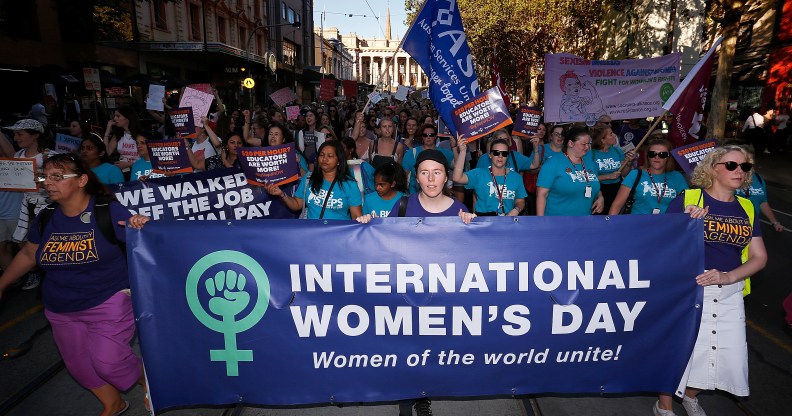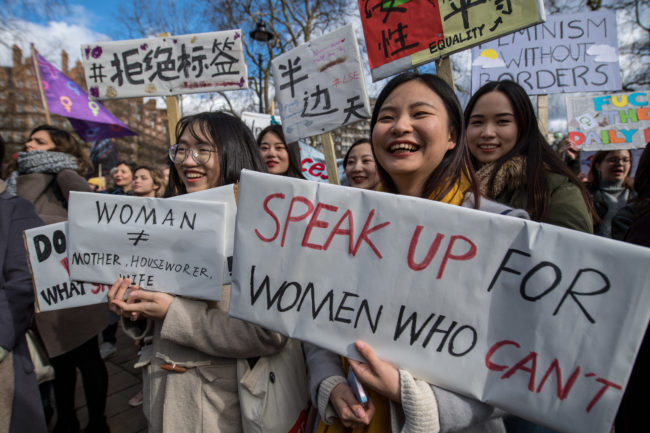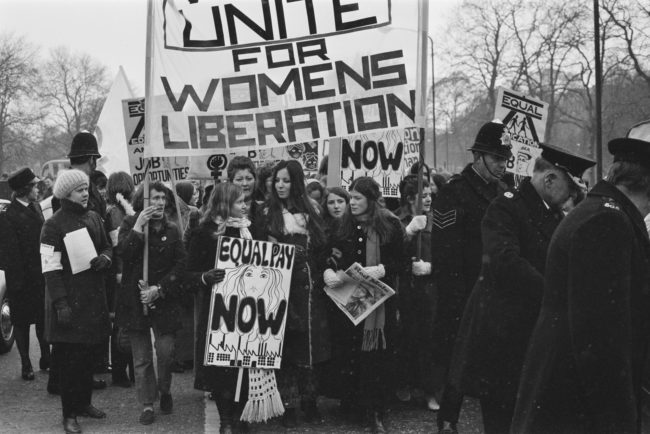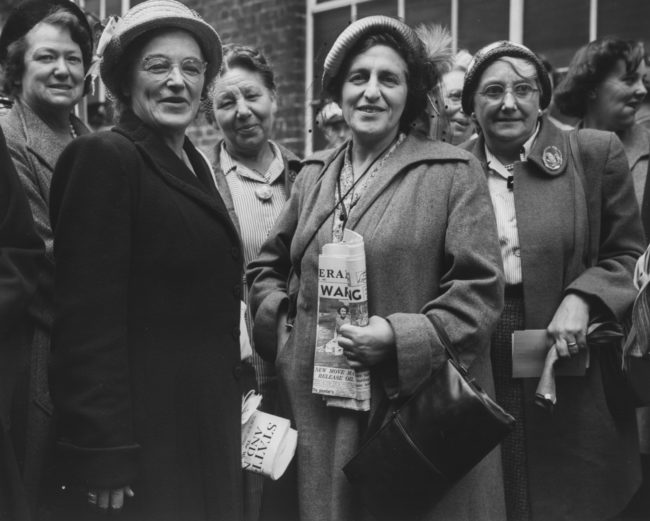International Women’s Day: 2019 theme, history and why we celebrate

Thousands of demonstrators attend a rally for International Women’s Day on March 8, 2017 in Melbourne, Australia. Marchers were calling for de-colonisation of Australia, an end to racism, economic justice for all women and reproductive justice, as well as supporting the struggle for the liberation of all women around the world, inclusive of trans women and sex workers. (Photo by Daniel Pockett/Getty Images)
International Women’s Day is celebrated across the world every year on March 8.
It’s a date to mark the social, economic and political achievements of women in history and in present day.
International Women’s Day is the time for millions of people to stand up for women’s rights, female empowerment and gender equality.
International Women’s Day 2019 theme
International Women’s Day 2019 theme is #BalanceforBetter. Its campaign theme aims for more gender balance in the world.

Women’s rights demonstrators hold placards during a rally in Russell Square on International Women’s Day on March 8, 2018 in London, England. International Women’s Day is annually held on March 8 to celebrate women’s achievements throughout history and across nations. It is also known as the United Nations (UN) Day for Women’s Rights and International Peace. (Chris J Ratcliffe/Getty)
The campaign also aims to celebrate achievements, raise awareness against global biases and take real action for gender equality.
The 2019 #BalanceforBetter campaign will be running all year long, not just on March 8.
Why #BalanceforBetter?
The International Women’s Day website reads: “Balance is not a women’s issue, it’s a business issue. The race is on for the gender-balanced boardroom, a gender-balanced government, gender-balanced media coverage, a gender-balance of employees, more gender-balance in wealth, gender-balanced sports coverage …
“Gender balance is essential for economies and communities to thrive.”
What can you do this International Women’s Day?
Firstly, simply become part of the conversation. Join in on the hashtag #BalanceforBetter and have your say. Make a positive difference for women all around the globe.
For International Women’s Day, and beyond, #SPB6807 @USFVinikMBA post your #IWD2019 message with #BalanceforBetter pose for a strong call to action for others to forge a gender-balanced world. It’s all about the people you work for and with – thank you @Harrolle_MGH pic.twitter.com/RGATY83Cqx
— Janelle Wells, PhD (@docjewells) March 6, 2019
Next, you can strike a pose. Use the hashtag #IWD2019 to go alongside a picture of you on social media. Post with your hands out to show your support for women everywhere.
You can donate, celebrate, collaborate, volunteer, sponsor and do so many more things. Find out how you can make your own personal difference with #IWD2019.
International Women’s Day history
The first National Woman’s Day, as it was originally named, was celebrated in the US on February 28, 1909.
The national date was formed to honour women who protested the year before. The protest occurred in New York City in 1908, led by a Ukrainian suffragist named Clara Lemlich. 15,000 female garment workers went on strike. They demanded better pay, shorter working hours and improved working conditions.

Members of the National Women’s Liberation Movement, on an equal rights march from Speaker’s Corner to No.10 Downing Street, to mark International Women’s Day, London, 6th March 1971. One woman is carrying a placard reading ‘Equal Pay Now’. On the right, a woman is holding a copy of the Trotskyist publication ‘Red Mole’. (Daily Express/Hulton Archive/Getty)
In 1910, National Woman’s Day became recognised as an international celebration after German women’s rights activist Clara Zetkin made the suggestion at an International Conference of Working Women in Copenhagen, Denmark.
It was first celebrated as an official international day on March 19, 1911. Germany, Switzerland, Austria and Denmark were amid the first countries to mark the day outside of the US. The day was supported by over one million people.
Fast forward in time, in 1975 during its International Women’s Year, the United Nations joined in on the annual celebration. They supported its aims of campaigning for women right’s worldwide and made it part of the organisation’s mission.

Dora Russell (left), former wife of social activist Earl Russell, and Mrs Sydney Silverman (centre), wife of Socialist MP for Nelson and Colne, are part of a delegation of women preparing to leave for a tour of Russia for International Women’s Day, pictured at Kensington Air Station in London, August 10th 1951. (J. Wilds/Keystone/Getty)
In 1996, the UN began adopting an annual theme for International Women’s Day. The first ever theme for International Women’s Day was “Celebrating the past, Planning for the Future.”
Now, in 2019, the theme is #BalanceforBetter, taking onboard the use of social media hashtags to further their message in the world.

